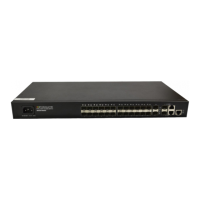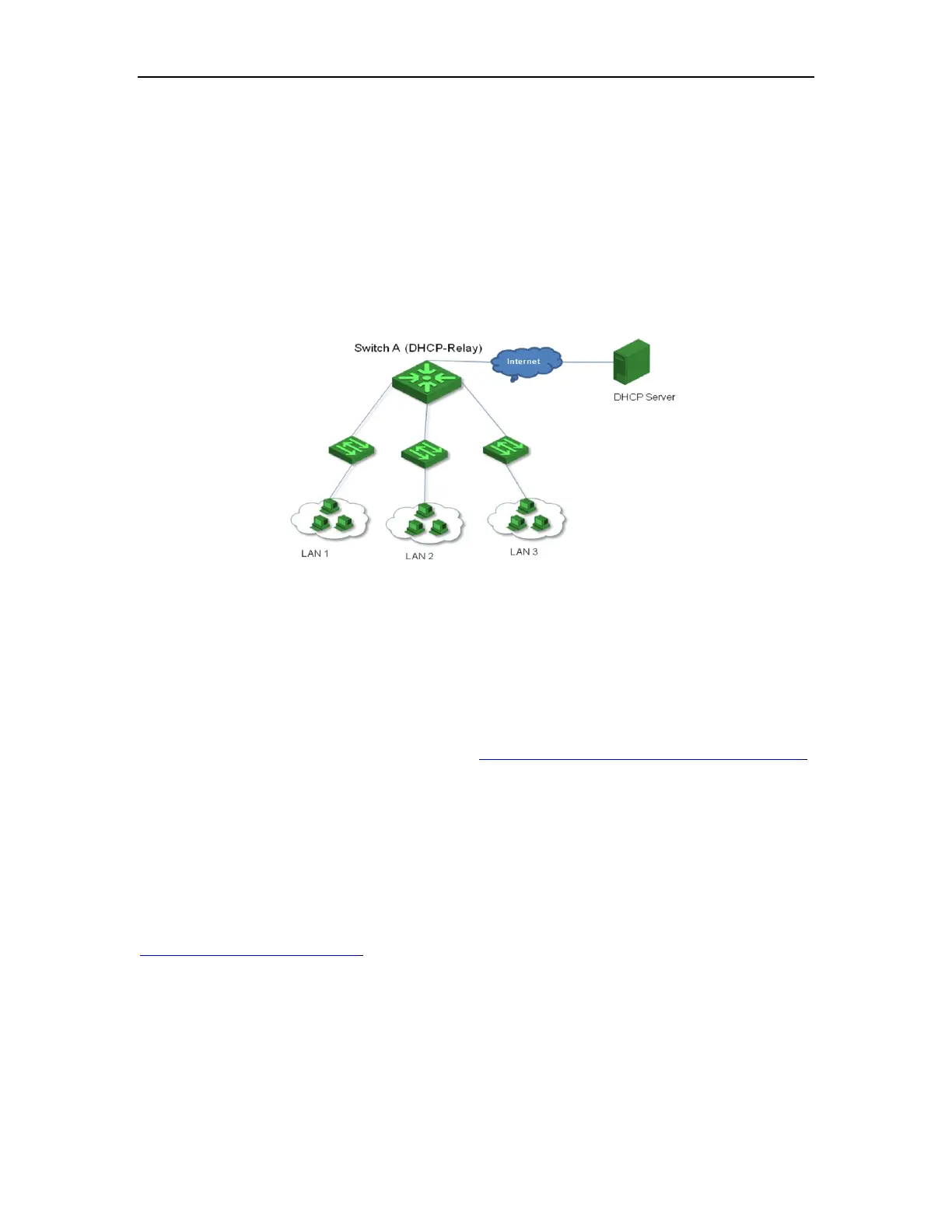DHCP Configuration
segment, that is, you need to deploy at least one DHCP server for each network segment,
which is far from economical.
DHCP Relay is designed to address this problem. It enables DHCP clients in a subnet to
communicate with the DHCP server in another subnet so that the DHCP clients can obtain IP
addresses. In this case, the DHCP clients in multiple networks can use the same DHCP
server, which can decrease your cost and provide a centralized administration.
15.3.2 DHCP Relay Fundamentals
Figure 15-4 Typical DHCP relay application
DHCP relays can transparently transmit broadcast packets on DHCP clients or servers to
the DHCP servers or clients in other network segments.
In the process of dynamic IP address assignment through the DHCP relay, the DHCP
client and DHCP server interoperate with each other in a similar way as they do without the
DHCP relay. The following sections only describe the forwarding process of the DHCP relay.
For the interaction process of the packets, see 15.2.2 Obtaining IP Addresses Dynamically.
The DHCP client broadcasts the DHCP-DISCOVER packet.
After receiving the packets, the network device providing the DHCP relay function unicasts
the packet to the designated DHCP server based on the configuration.
The DHCP server assigns IP addresses, and then broadcasts the configuration
information to the client through the DHCP relay. The sending mode is determined by the flag
in the DHCP-DISCOVER packets from the client. For detailed information, refer to section
15.2.3 DHCP Packet Format.

